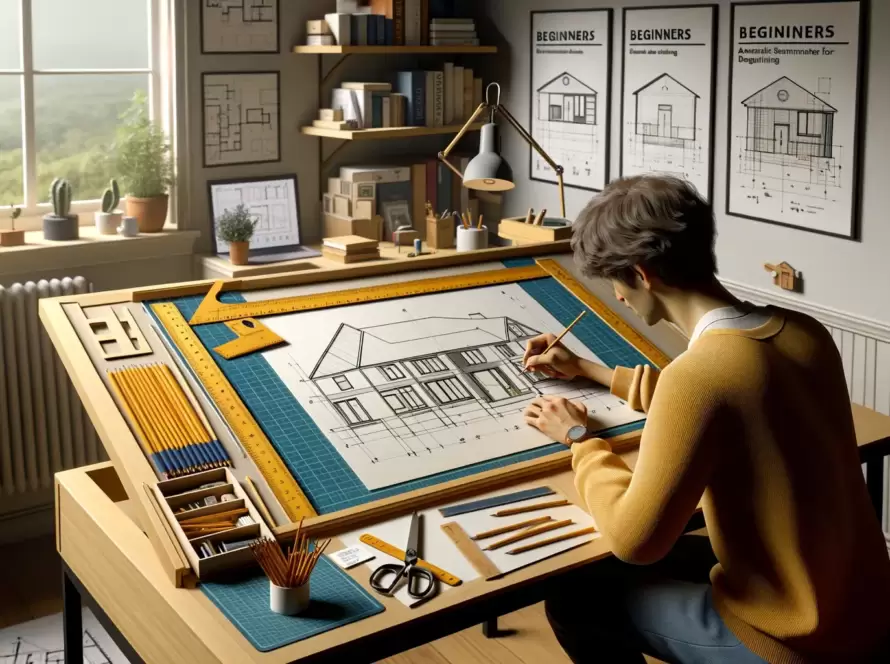
Table of Contents
Introduction: Pioneering the Way
Architecture, the amalgamation of art and science, is the embodiment of human civilization’s progress. Behind every iconic structure lies the genius of visionary architects whose innovation and creativity have shaped the world we inhabit today. In this exploration, we delve into the lives and legacies of the founding fathers of architecture, whose revolutionary ideas laid the cornerstone for architectural marvels across centuries.
Defining the Foundations: Vitruvius and the Ten Books on Architecture
Our journey begins with Marcus Vitruvius Pollio, the Roman architect whose treatise, “De Architectura,” remains a timeless masterpiece. Vitruvius articulated the principles of architecture in his seminal work, “The Ten Books on Architecture,” outlining the essential elements of design, construction techniques, and the importance of symmetry and proportion. His holistic approach, encompassing aesthetics, engineering, and functionality, laid the groundwork for architectural theory for centuries to come.
Vitruvius’s enduring influence is evident in his concept of “firmitas, utilitas, venustas” (firmness, commodity, delight), emphasizing the structural integrity, utility, and beauty of buildings. His meticulous observations of ancient Roman architecture, coupled with insightful reflections on the relationship between architecture and society, established him as the forefather of architectural theory.
Revolutionizing the Renaissance: Filippo Brunelleschi and the Dome of Florence
Transitioning to the Renaissance period, we encounter Filippo Brunelleschi, the visionary architect hailed for his engineering ingenuity and artistic prowess. Brunelleschi’s crowning achievement, the dome of the Florence Cathedral, stands as a testament to his innovative spirit and mastery of architectural design. By devising novel construction techniques, including the use of a double-shell structure and innovative scaffolding systems, Brunelleschi overcame the challenges posed by the colossal dome, transforming architectural possibilities.
Brunelleschi’s architectural marvel not only redefined the skyline of Florence but also ignited a Renaissance fervor for classical aesthetics and mathematical precision. His emphasis on geometric harmony and spatial proportion revitalized architectural discourse, inspiring generations of architects to pursue perfection in form and function.
Envisioning the Ideal: Andrea Palladio and the Palladian Legacy
Enter Andrea Palladio, the luminary of the Venetian Renaissance, whose architectural treatises and iconic villas epitomize classical elegance and symmetry. Palladio’s architectural legacy is embodied in his seminal work, “The Four Books of Architecture,” wherein he distilled the principles of ancient Roman architecture into a comprehensive guide for aspiring architects. With an unwavering commitment to proportion, harmony, and the integration of architecture with the natural landscape, Palladio reshaped the architectural landscape of the Renaissance.
Palladio’s influence extended beyond the realms of Italy, permeating across Europe and beyond, as his Palladian style became synonymous with architectural refinement and sophistication. From stately villas to grand palaces, Palladio’s architectural vision continues to inspire awe and admiration, illustrating the enduring power of classical ideals in shaping architectural excellence.


Engineering Marvels: Gustave Eiffel and the Iron Elegance
Transitioning to the industrial age, we encounter Gustave Eiffel, the mastermind behind one of the most iconic structures in the world, the Eiffel Tower. Eiffel’s revolutionary use of wrought iron as a structural material paved the way for monumental engineering feats, defying conventional architectural norms. By seamlessly blending form with function, Eiffel transformed the Parisian skyline and revolutionized the possibilities of structural design.
The Eiffel Tower, with its intricate lattice structure and soaring height, exemplifies Eiffel’s commitment to pushing the boundaries of architectural innovation. Beyond its aesthetic allure, the Eiffel Tower stands as a testament to the ingenuity of engineering and the enduring legacy of visionary architects who dare to dream big.
Modernist Vanguard: Le Corbusier and the Principles of Architecture
In the tumultuous landscape of the 20th century, emerges Le Corbusier, the pioneering figure of modern architecture and urban planning. Rejecting ornamental excess in favor of functionalism and efficiency, Le Corbusier championed the principles of “l’Esprit Nouveau” (The New Spirit), advocating for a radical reimagining of the built environment. His five points of architecture, emphasizing pilotis, open floor plans, horizontal windows, free facades, and roof gardens, revolutionized architectural design and laid the groundwork for the modernist movement.
Le Corbusier’s vision extended beyond individual buildings, encompassing urban planning and social reform, as he sought to address the pressing challenges of urbanization and social inequality. Through his iconic works such as the Villa Savoye and the Unité d’Habitation, Le Corbusier left an indelible mark on the architectural landscape, inspiring generations to embrace the ethos of modernism and pursue architectural innovation with purpose.
Breaking Barriers: Zaha Hadid and the Architecture of Fluidity
In the contemporary architectural panorama, Zaha Hadid emerges as a trailblazer, challenging conventions and redefining architectural possibilities with her avant-garde designs. Hadid’s signature style, characterized by fluid forms and dynamic geometries, transcends traditional boundaries, inviting viewers to reimagine space and movement. From the sweeping curves of the Heydar Aliyev Center to the futuristic lines of the Guangzhou Opera House, Hadid’s architectural vision pushes the limits of imagination, blurring the lines between architecture and art.
Hadid’s relentless pursuit of innovation and experimentation earned her the title of the “Queen of the Curve,” as she shattered glass ceilings and paved the way for women in architecture. Her unwavering commitment to pushing boundaries and challenging norms continues to inspire architects around the globe, reaffirming the transformative power of architectural imagination.
Conclusion: Honoring the Legacy
In tracing the lineage of architectural innovation, we pay homage to the pioneering spirits whose visionary ideas have shaped the built environment and enriched human experience. From Vitruvius to Hadid, each architect has left an indelible mark on the architectural landscape, inspiring generations to aspire to greatness and embrace the boundless possibilities of architectural imagination. As we look to the future, let us honor the legacy of the founding fathers of architecture and embark on a journey of discovery and innovation, guided by their timeless wisdom and enduring spirit of creativity.



